Exhibition view « An Inuit art cooperative in Canadian great north » Canadian Cultural Center, 2024 © Vincent Royer, OpenUp Studio/Canadian Cultural Center
The Canadian Cultural Centre (Paris) opens its exhibition « An Inuit art cooperative in Canadian great north », combining new prints and sculptures from renowned Claude Baud and Michel Jacot Collection. The exhibition gathers 130 works illustrating the richness of a unique cooperative through main themes such as artic legends, spirits, cosmogony.
Le centre Culturel Canadien inaugure son exposition « Une coopérative Inuit dans le Grand Nord canadien » qui s’articule autour de nouvelles lithographies et sculptures de la célèbre Collection Claud Baud et Michel Jacob. L’exposition réunit 130 œuvres illustrant la richesse d’une coopérative unique à travers de grandes thématiques telles que : les légendes arctiques, les esprits, la cosmogonie.
We firstly get an impression of the Kinngate village that is the home of many of the artists featured in this exhibition, with a pencil drawing of it from a birds eye view from above by Shuvinai Ashoona which is rather fitting considering the dominance of the depiction of birds at the heart of Inuit art as we learn throughout the exhibition. Her participation to Venice Biennale 2022 received a special mention from the jury and gave her an international dimension. Placed beside it is a screen showing a video taken at the Kinngate studio to give us a concrete feel for the place.
Nous avons une première impression du village de Kinngate, où vivent de nombreux artistes présentés dans cette exposition, avec un dessin au crayon de Shuvinai Ashoona qui représente le point de vue de l’oiseau de haut, ce qui est plutôt approprié compte tenu de la prédominance de la représentation des oiseaux au cœur de l’art inuit, comme nous l’apprenons tout au long de l’exposition. Sa participation à la Biennale de Venise 2022 a reçu une mention spéciale du jury et lui a donné une envergure internationale. À côté, un écran diffuse une vidéo prise au studio de Kinngate pour nous donner une idée concrète du lieu.
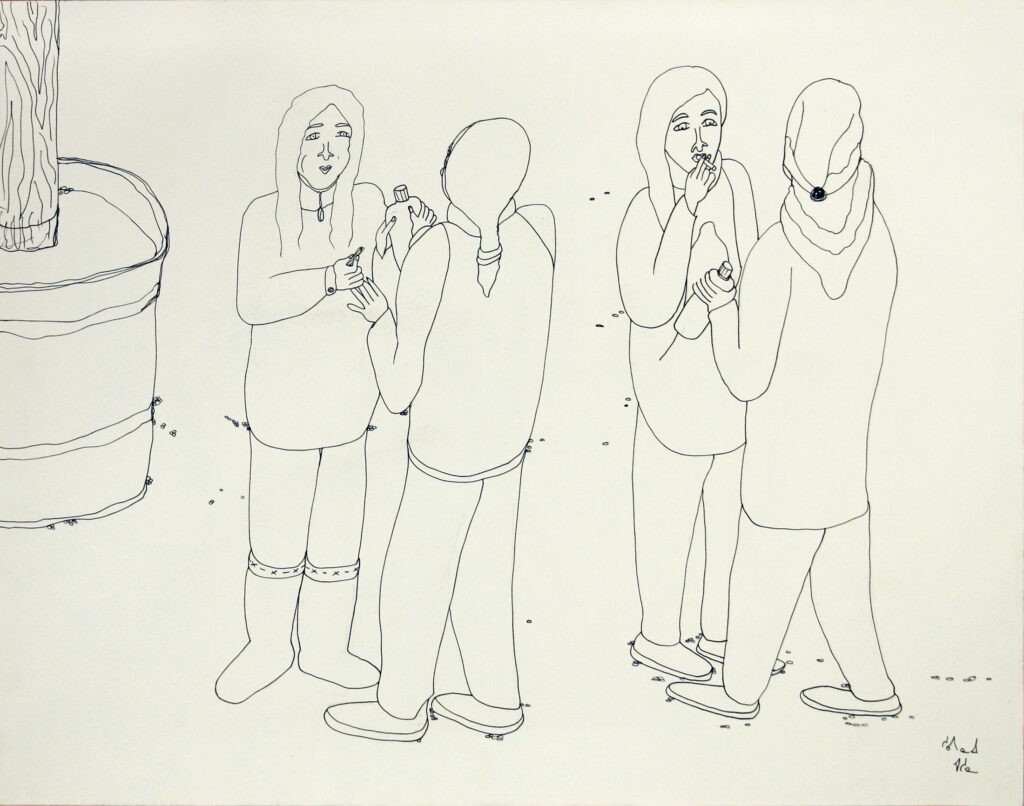
Shuvinai ASHOONA, Sans titre (femmes en ville), 2024 © WBEC, Kinngait, Nunavut
Lithography is an important medium that takes precedence in Inuit culture and art that has existed for many years, through it the artists bring to life local folk stories of animals and their metamorphosis. A wall in the front room of the exhibit is entirely dedicated to lithographs of various birds that are native to the land such as ravens, falcons, ducks and the most prominent figure of them all, the owl. The pieces displayed demonstrate the variety in technique with more traditional methods such as stone cut and stencil as well as combining them with contemporary ones that are more vivid in colour with the use of aquatint.The Inuit community learnt the lithography technique because it enabled independent self expression without the need of a master engraver, it is also an easily accessible and affordable artistic tool that is treated with the utmost care.
La lithographie est un médium important qui occupe une place prépondérante dans la culture et l’art inuit depuis de nombreuses années. Grâce à elle, les artistes donnent vie aux histoires folkloriques locales sur les animaux et leur métamorphose. Un mur de la première salle de l’exposition est entièrement consacré à des lithographies de divers oiseaux indigènes, tels que des corbeaux, des faucons, des canards et le plus célèbre d’entre eux, le hibou. La communauté inuit a appris la technique de la lithographie parce qu’elle lui permettait de s’exprimer de manière indépendante, sans avoir recours à un maître graveur. C’est également un outil artistique facilement accessible et abordable qui est traité avec le plus grand soin.
Kenojuak Ashevak is a prominent artist in this exhibit whose pieces almost take up half of the bird wall itself. Her print “Raven’s voyage” from 2001 depicts two ravens standing back to back, it incorporates the use of aquatint to create a rich combination of indigo wings on the burnt orange birds with crimson red pooling at their feet. Symmetry is also a key element in this piece and can often be found in Inuit lithography, evoking the notion of balance in living beings.
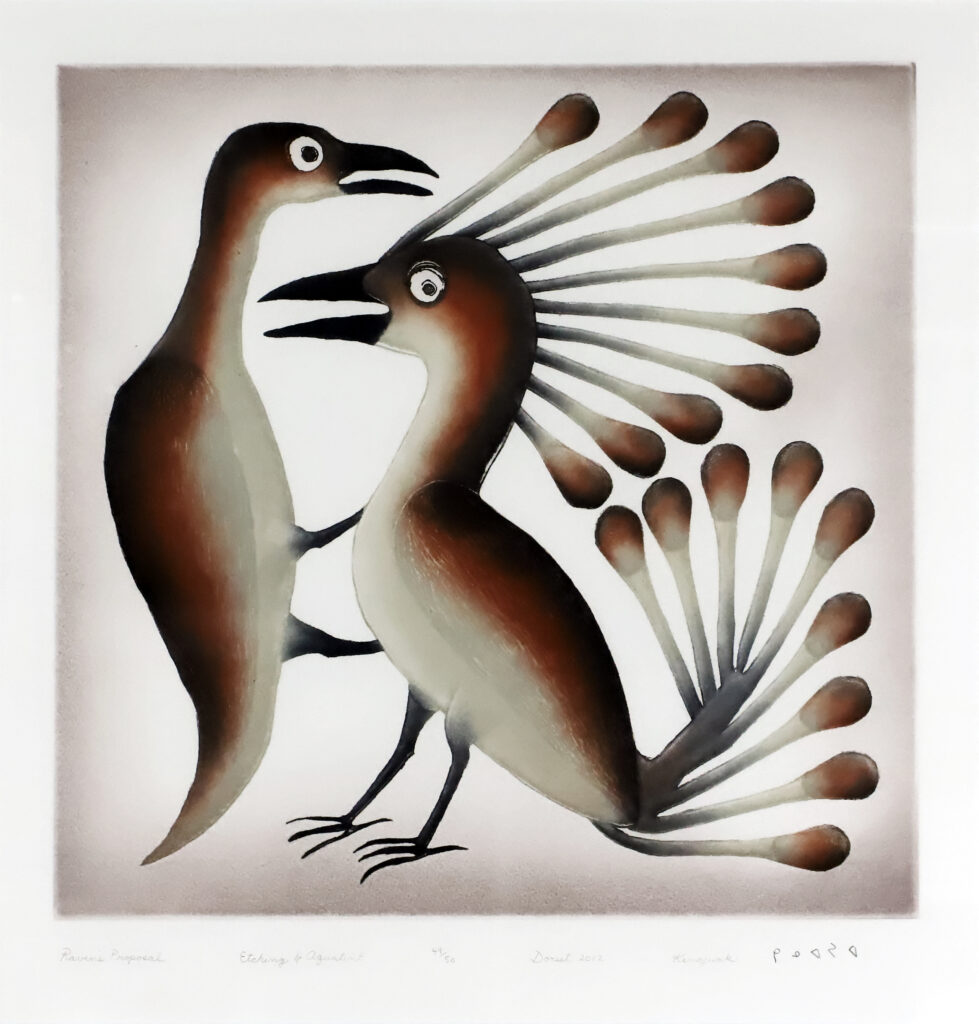
Kenojuak ASHEVAK, Raven’s Proposal, 2012 – Claude Baud and Michel Jacot Collection © WBEC, Kinngait, Nunavu
Kenojuak Ashevak est une artiste de premier plan dans cette exposition, dont les œuvres occupent presque la moitié du mur des oiseaux. Sa gravure « Raven’s voyage » de 2001 représente deux corbeaux se tenant dos à dos. Elle utilise l’aquatinte pour créer une riche combinaison d’ailes indigo sur les oiseaux orange brûlé et de rouge cramoisi s’écoulant à leurs pieds. La symétrie est également un élément clé de cette œuvre et se retrouve souvent dans la lithographie inuit, évoquant la notion d’équilibre chez les êtres vivants.
She also explores symmetry in her more recent work such as « The gathering of throat singers » 1991 that pictures many women with the lower body of a bird.They all face each other for the throat singing which is a historically significant practise in Inuit culture that was previously banned in the early 20th century by Christian missionaries. However it grew in resurgence in the 1980s as the community no longer feared repercussion and proudly displayed their customs.
Elle explore également la symétrie dans ses œuvres plus récentes, telles que « The gathering of throat singers » (1991), qui représente de nombreuses femmes avec le bas du corps d’un oiseau. Elles se font toutes face pour le chant de gorge, une pratique historiquement importante dans la culture inuit, qui avait été interdite au début du 20e siècle par les missionnaires chrétiens. Elle a connu néanmoins un regain d’intérêt dans les années 1980, lorsque la communauté n’a plus eu peur des répercussions et a affiché fièrement ses coûtumes.
Stone is a material that is often used in Inuit art and that can be found throughout this exhibition, with it being used to make lithography as well as the sculptures that are presented within the same space. This material is not dead matter, to the Inuit community it is believed as being inhabited by spirits like all things in nature. During the process of lithography if there are what we would deem as mistakes, is instead perceived in the Inuit community as being the stone’s personality coming through. The idea of metamorphosis in animals and humans is often found in traditional Inuit stories. This can notably be seen in Ningeeoschiak Ashoona’s stone sculptures that depicts the spiritual metamorphosis of human figures being intertwined with animals.
La pierre est un matériau souvent utilisé dans l’art inuit et que l’on retrouve tout au long de cette exposition, puisqu’elle est utilisée pour réaliser des lithographies ainsi que les sculptures présentées dans le même espace. Ce matériau n’est pas une matière morte, pour la communauté inuit, il est considéré comme habité par des esprits, comme toutes les choses de la nature. Au cours du processus de lithographie, s’il y a ce que nous considérons comme des erreurs, la communauté inuit y voit plutôt la personnalité de la pierre qui s’exprime. L’idée de métamorphose chez les animaux et les humains est souvent présente dans les récits traditionnels inuits. On le voit notamment dans les sculptures en pierre de Ningeeoschiak Ashoona, qui dépeignent la métamorphose spirituelle de figures humaines entrelacées avec des animaux.
The contemporary lives of the Inuit community in Kinngate is the focus of artist Shuvinai Ashoona’s art who depicts their daily lives in her large scale coloured pencil drawings. This piece “Untitled, drinking at camp” 2024 evokes the devastating long-lasting impact colonisation has on first nations such as alcoholism and drug abuse. Ashoona’s work breaks with tradition in its contemporary subject matter by giving us a glimpse into the mundane of the everyday of the Inuit people. Contrary to these grandiose legends of spirituality and metamorphosis found in the other pieces of the exhibition. She also emphasises in the notion of a group andunity over the individual, this is common in Inuit art because the portraiture genre is not commonly found.
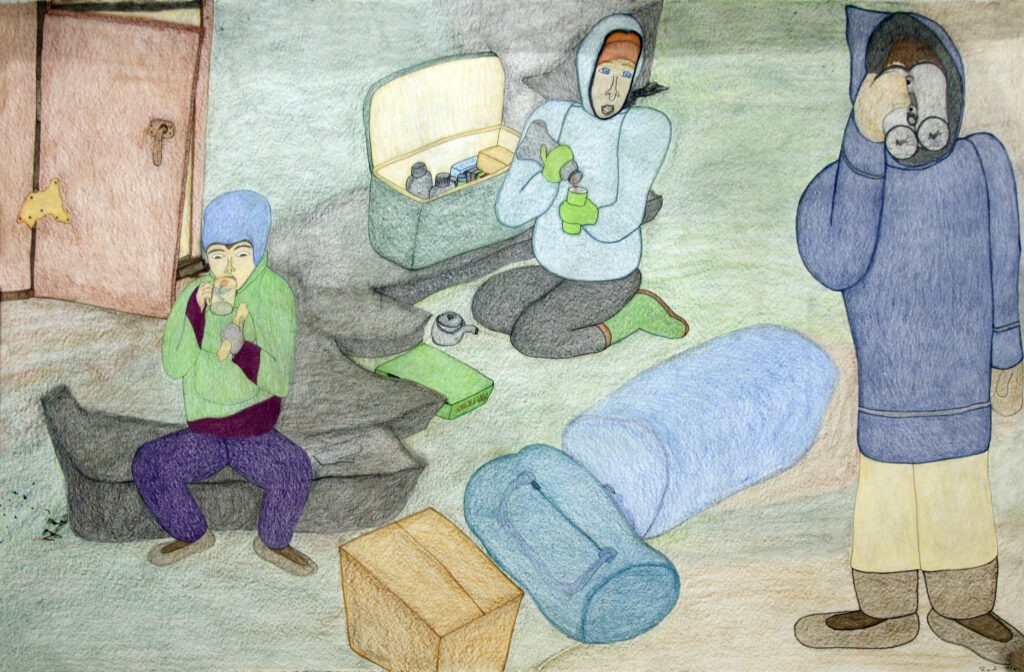
Shuvinai ASHOONA, Sans titre (boire au camp) – Untitled (Drinking at Camp), 2024 © WBEC, Kinngait, Nunavu
La vie contemporaine de la communauté inuite de Kinngate est au cœur de l’art de l’artiste Shuvinai Ashoona, qui dépeint leur vie quotidienne dans ses dessins aux crayons de couleur à grande échelle. L’œuvre « Untitled, drinking at camp » 2024 évoque les effets dévastateurs et durables de la colonisation sur les Premières nations, tels que l’alcoolisme et la toxicomanie. Le travail d’Ashoona rompt avec la tradition dans ses sujets contemporains en nous donnant un aperçu de la banalité du quotidien du peuple inuit. Contrairement aux légendes grandioses de spiritualité et de métamorphose que l’on trouve dans les autres œuvres de l’exposition. Elle met également l’accent sur la notion de groupe et d’unité par rapport à l’individu, ce qui est courant dans l’art inuit, car le genre du portrait n’est pas courant.
The ever changing world affecting the ancestral isolation in the Kinngait village is a key topic Pudlo Pudlat explores in his lithograph prints. This can be seen with his piece “Interrupted Solitude” 1985 where a muskox lies on its back facing the sky. However the animal’s tranquil state is interrupted by a helicopter going past in a striking red colour that contrasts with the rest of the line work being navy blue and emerald green. The contemporary image of the helicopter is often found in Pudlat’s work in scenes with animals native to the land, with his other lithographs placed beside it. It is also an evocative symbol because the artist was said to have once been stranded on a sheet of ice before getting rescued by a helicopter passing by that spotted him.
Pudlo PUDLAT, Solitude troublée – Interrupted Solitude, 1985 Claude Baud and Michel Jacot Collection © WBEC, Kinngait, Nunavu
Le monde en constante évolution qui affecte l’isolement ancestral du village de Kinngait est un sujet clé que Pudlo Pudlat explore dans ses lithographies. C’est ce que montre son œuvre « Interrupted Solitude » (1985), où un bœuf musqué est allongé sur le dos, face au ciel. La tranquillité de l’animal est cependant interrompue par le passage d’un hélicoptère d’un rouge saisissant qui contraste avec le reste du travail au trait, bleu marine et vert émeraude. L’image contemporaine de l’hélicoptère se retrouve souvent dans l’œuvre de Pudlat, dans des scènes d’animaux indigènes, avec ses autres lithographies placées à côté. Il s’agit également d’un symbole évocateur, car l’artiste aurait un jour été bloqué sur une plaque de glace avant d’être secouru par un hélicoptère qui passait par là et qui l’avait repéré.
This exhibition gives the remote village of Kinngate in the Canadian great north a platform on an international scale that allows the visitors insight into the rich history that shapes Inuit art. The variety of artworks displayed illustrate the significance of spirituality as can be seen with the depictions of artic legends, animal spirits and their metamorphosis. Whilst also showing the customs and traditions of everyday life of first nations in a contemporary lens due to the implication of a franco-swiss passionate collecting duo.
Cette exposition offre au village isolé de Kinngate, dans le Grand Nord canadien, une tribune à l’échelle internationale qui permet aux visiteurs de découvrir la riche histoire qui façonne l’art inuit. La variété des œuvres exposées illustre l’importance de la spiritualité, comme en témoignent les représentations de légendes articulaires, d’esprits d’animaux et de leurs métamorphoses. Elles montrent également les coutumes et les traditions de la vie quotidienne des premières nations sous un angle contemporain grâce à l’implication d’un duo franco-suisse de collectionneurs passionnés.
Curator : Catherine Bédard
L’exposition est organisée en partenariat avec la West Baffin Cooperative de Kinngait (Cap Dorset, Ile de Baffin au Nunavut qui fête son 65ème anniversaire.
Phoebe Wilson
Practical Infos/ Infos pratiques :
“An Inuit art cooperative in Canadian great north”
Jusqu’au 17 Janvier 2025
Centre Culturel Canadien
130 rue du Faubourg Saint-Honoré, 75008 Paris
Entrée libre et gratuite.
Ouverture du lundi au vendredi de 10h à 18h.
Dernière entrée 30 minutes avant la fermeture.

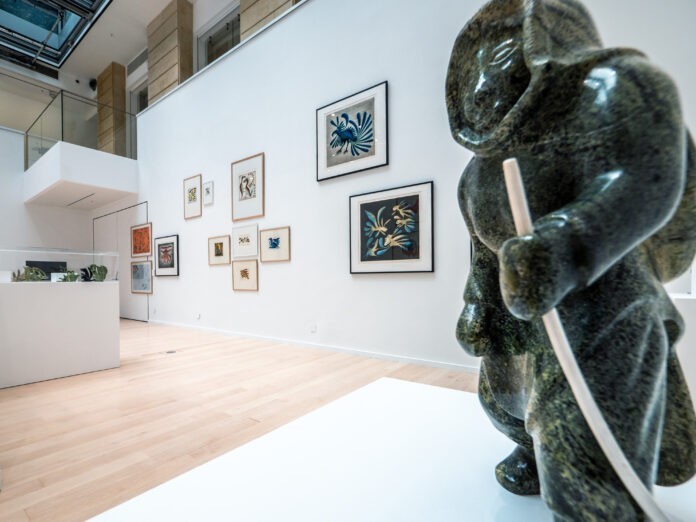
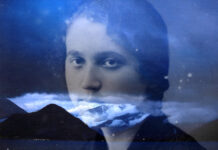
![Rencontre Evelyne Deret, ART [ ] COLLECTOR- « Des Collectionneurs invitent un Artiste »](https://fomo-vox.com/wp-content/uploads/2025/12/DSC7937-218x150.jpg)
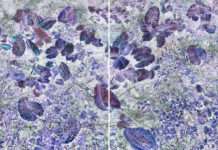
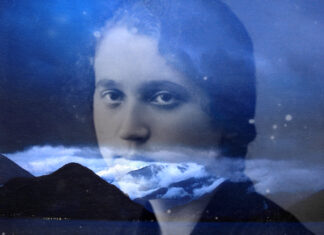
![Rencontre Evelyne Deret, ART [ ] COLLECTOR- « Des Collectionneurs invitent un Artiste »](https://fomo-vox.com/wp-content/uploads/2025/12/DSC7937-100x70.jpg)

